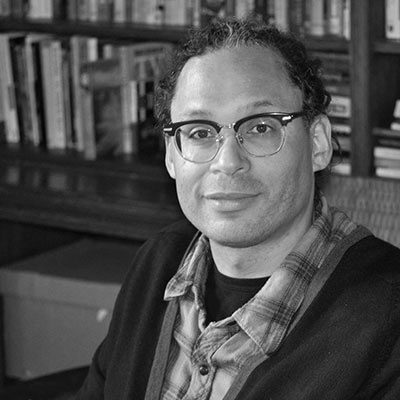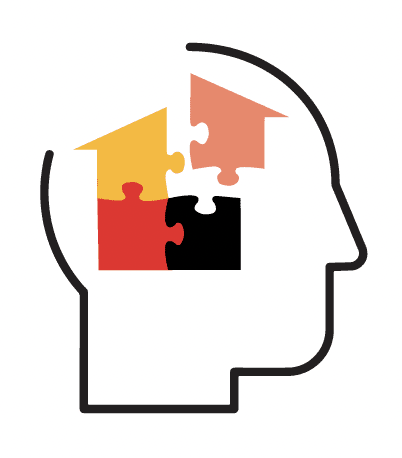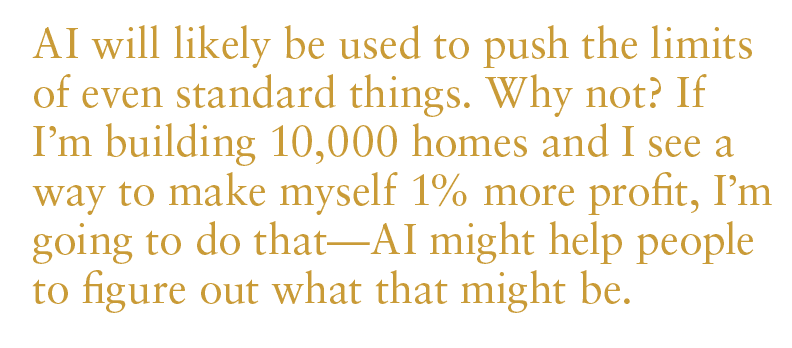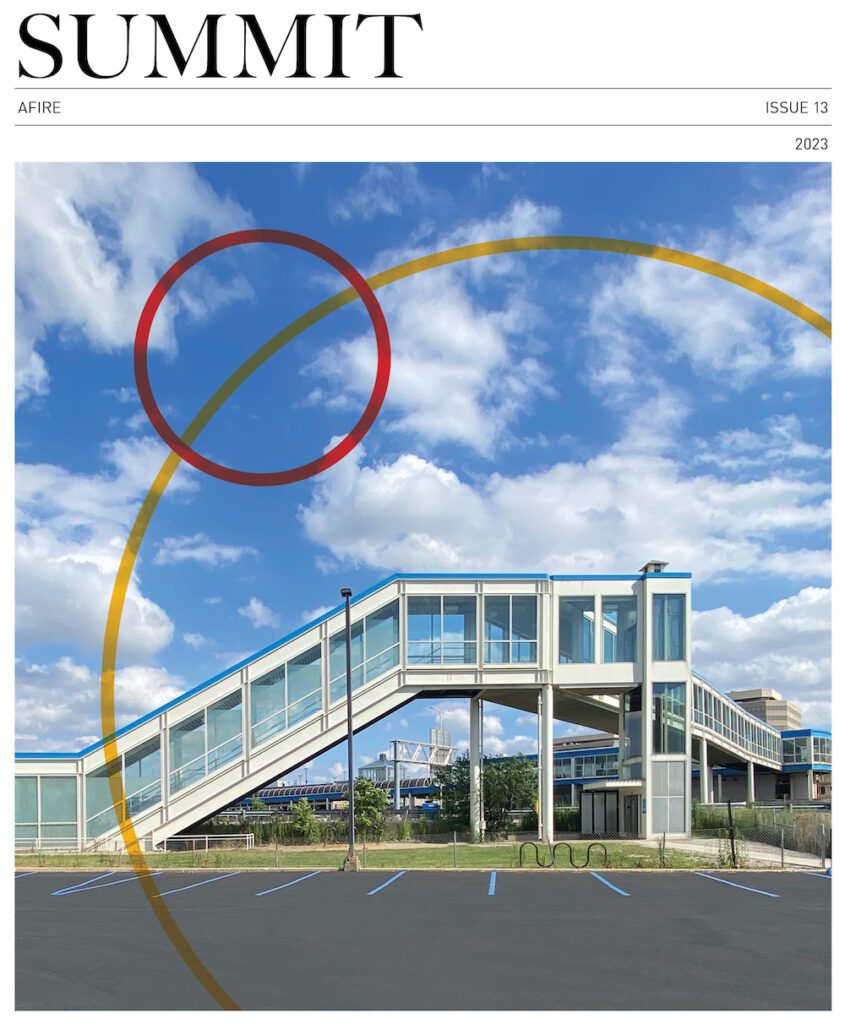During the pandemic, we learned how to do anything from anywhere—and how we defined building usage evolved in kind. So where do we go next?
Whether asked openly or spoken of in code, the big question facing the future of commercial real estate is: what happens to all those office buildings?
To think through this question from a perspective beyond the CRE bubble, AFIRE Board Member Peter Grey-Wolf recently spoke with David Theodore, Director of the Peter Guo-hua Fu School of Architecture at McGill University, who shared his thoughts on how our use of space has changed since COVID, some of the challenges we face going forward, and some opportunities that he sees in AI and building conversions.
Peter Grey-Wolf (PGW)
During the pandemic we learned how to do many things from anywhere. You can do yoga, groceries, and an office job all from home. This raises the question of how we define use of a building. Do we need to be broader about our definition of program?

David Theodore (DT)
From an educational point of view, we’ve been looking at “program” for a long time. It doesn’t seem like it’s at a turning point. For example, if you think of the kinds of buildings and projects that Office for Metropolitan Architecture (OMA) has produced, and the kind of people who have trained through OMA—a lot their work is about thinking about program in determining what a building might be. Those are often public and institutional buildings—museums, libraries, galleries and so on—where the program is already narrowed down to a certain degree.
People are still going to go to museums in a way that the COVID hasn’t changed. The programming changes that you’re talking about are not necessarily in architectural driven sectors. They’re more about city development, urban developments, and office buildings.
The people who are developing shopping malls and office buildings are not asking architects, “What should we do?” Do they want architects to be rethinking the program of shopping malls? I haven’t encountered any developers who work like that—but they may be out there.
The main problem of getting somebody from the suburbs downtown to work is about the commuting. No matter how wonderful the building is, commuting covers a whole series of factors that aren’t easily overcome. I have colleagues who take an hour and a half to get here each day. That’s three hours of the day. I can walk here in 20 minutes, so I’m more likely than my colleagues to go to a restaurant after work, because they have an hour and a half trip ahead of them to get back home. That is not changed by the quality of the architecture downtown.
People prefer to be in the suburbs for all sorts of reasons, especially when it comes to having children. In North America, as soon as you have children, you cannot live downtown anymore. You have children and you move out of downtown, so downtowns don’t have the characteristics that we like in European cities: a way of life where all classes of people, in all stages of life, are downtown.
Architects believe in walkable cities, with zones that don’t require an hour-and-a-half commute. There is a library and a school and a grocery store and a place to work that’s within walking distance. Part of that is an architectural problem. In Ontario and in Canada, there’s this question of the “missing middle” in housing, where we have skyscrapers and single-family homes, but not the kind of developed housing that is normal in Europe. And part of that missing middle turns out to be the result of significant lobbying to get rid of that second exit stair. We only have it because firefighters need the insurance. It’s not because we don’t know how to build buildings with only one exit stair. When it comes to programs, there’s a whole host of problems that are non-architectural that need to be solved to before the architects can get to work designing and building these “missing middles.” It’s not a lack of design quality that’s holding it back.
PGW
Do you think there is a solution to the missing middle that uses the buildings that are now being underutilized, such as the office buildings or shopping malls with excessive vacancy?
DT
There’s a lot of energy going into thinking of whether that’s possible and how you might do it.
As an example, we still have about 250 unused churches in Quebec. We changed some into gyms and some into housing, some into cultural centres, and some into dance centres. But it turns out that it’s very hard to turn these important civic buildings into something else.
There’s not really a toolkit answer. Each project is a special case that requires a lot of thought and money. But I don’t think that’s a forever problem, there’s enough people thinking about that that if you asked again in five years, there may be a clear answer: this is what you do in a shopping mall to turn it into a community. Why not? The experiments need to come from somewhere, but I’ve yet to see somebody willing to do something where they may lose money just so we can learn how to convert malls into housing.
PGW
Is there something that you see coming out of the COVID pandemic that will stay with us for the long-term—either rationally or irrationally?
DT
There’s an optimism that we will pay more attention to air quality in buildings, which ties neatly into our concerns about our ecology, the environment, and climate change.
There is an understanding that came out of the pandemic that that you can improve air quality in buildings even if its not a cure for an illness. For example, consider tuberculosis from 1850 to 1950: if you had tuberculosis, the answer was architectural. You slept outside, perhaps on sun porches. But you used architecture to make sure you got sun and fresh air. That was the therapy for tuberculosis. Then came antibiotics, which were a thousand times more effective than sun and fresh air. So, architecture became nothing in the equation of the health and safety.
For all those examples where architecture seemed to help with health issues, there are all these other scientific advancements that devalued the useful role of architecture.
There’s a lot of sicknesses associated with the air in buildings—not just the transmission of disease. So, if you put that together with our concern for passive ventilation and fresh air, both of which arise out of our concern with ecology, addressing each of those technical attributes holistically, has us paying attention to the circulation of air in a much more forceful way than we do right now.

PGW
The real estate industry has a decent handle on how to deal with carbon footprint and environmental impacts as part of the ESG mandates that many investors have. But we don’t really have a good sense of how to fulfill the social mandates. How should the real estate industry should address these?
DT
A few years ago, I co-taught a studio for the first-year masters students. The premise was: do you know how to fit a building into an idea about what’s going on in the city? The clear answer from the students was that we don’t even want to know how to do that.
They really resisted trying to figure out what effect the design of the building would have on the profile of the street. They didn’t think it was part of their job. But by the end of the studio, some of them really became interested in these considerations.
We worked with a promoter who was trying to develop in a socially conscious way. The students couldn’t initially see what the actual problem was. You just have a bus lane: how does that affect the size of the building? I do think there is a part of education where the students are eager to understand how social considerations actually work in development, but the schools themselves need to change if we’re going to actually take students along that journey.
PGW
Do you think that AI, virtual reality, or augmented reality will impact architecture? How can we use these technologies over the next five or ten years?
DT
AI, VR, and AR are going to affect how we both teach students and how they do their jobs in offices as professionals. AI can generate architectural possibilities much faster than a team of very creative people. The tools are very crude right now, but they are moving so quickly that, in three or four years, people will be able to do revolutionary things with design, structural analysis, and costing in new ways that are very cumbersome right now.
AI allows you to make things more precise. It’s not just that you could get at an initial draft faster; it’s that you can test important architectural questions. Can we make this cantilever longer, or make this building thinner or taller or offer more space? AI will likely be used to push the limits of even standard things. Why not? If I’m building 10,000 homes and I see a way to make myself 1% more profit, I’m going to do that—AI might help people to figure out what that might be.
PGW
Maybe optimistically we can use the AI to help us solve our problems of how to retrofit and reuse some of the underused buildings that we have?
DT
People who are interested in retrofit will be playing with AI to see if it can help. People are figuring out how to train the models and get better answers and it doesn’t seem like there’s an obvious end limit to where the technology is going. Imagine that you go to a big architecture or engineering firm and you track everybody’s keystrokes as they use Revit for a year. And then at the end of that period you say, hey, I want a 14-story building—and AI will give you a realistic draft. Why wouldn’t it?

Your other questions start to come in with people who have specific agendas. You put AI, rethinking ventilation, and affordable housing together in one project it’s, very hard to predict what that could be. They are actual changes in thinking, that architecture could respond to to come up with new solutions and ideas.
For example, Shopping mall retrofits that I’ve seen have so far been very, very, unimaginative. You really want somebody to come up with something that changes how we think. If it was easy, everybody would do it all the time. The answers so far are mundane and not yet able to convince people that such reprogramming is worthwhile. AI could be useful.
And what about putting a high school, inside of some of these downtown skyscrapers, for example? Why not? That wouldn’t be the end of the transformation, but it might be enough to spark some new thinking. That would be a way to get people interested in thinking about it and experimenting. That’s a very kind of “architecture school” way to think about it. The ideas are going to come—they need to. Because what is downtown San Francisco going to do, if they don’t start doing some of this experimental thinking?
IN THIS ISSUE

NOTE FROM THE EDITOR: WELCOME TO #13
Benjamin van Loon | AFIRE
OFFICE TROUBLES: FINANCIAL RISKS AND INVESTING OPPORTUNITIES IN US CRE
Dr Alexis Crow | PwC + Byron Carlock
THE UNDERPERFORMANCE PARADOX: WHY INDIVIDUAL INVESTORS FALL BEHIND DESPITE BUYING LOW
Ron Bekkerman | Cherre + Donal Ward | Tenney 101
CLIMATE THREAT: EXTREME WEATHER IS THE NEW NORMAL FOR REAL ESTATE
Jacques Gordon, PhD | MIT
CLIMATE OPPORTUNITY AWAITS: HOW REAL ESTATE CAN INVEST IN CLIMATE ADAPTATION
Michael Ferrari, PhD and Parag Khanna, PhD | Climate Alpha
PREMIUM PRICE TAGS: INSURABILITY THROUGH PROPERTY RESILIENCE DATA
Bob Geiger | Partner Engineering & Science
REAL ESTATE WEB3: THE EMPEROR’S NEW CLOTHES OR THE NEXT BIG THING?
Zhengzheng Tan, Alice Guo, and Naveem Arunachalam | MIT
ADAPTIVE TO REUSE: COULD BUILDING CONVERSIONS BE DIFFICULT, EXPENSIVE . . . AND STILL PROFITABLE?
Josh Benaim | Aria
RENOVATE, REBRAND, REPOSITION: ADDING VALUE TO MULTIFAMILY THROUGH REVITALIZATION
Robert Kilroy, CFA | The Dermot Company + Will McIntosh, PhD | Affinius Capital
REDEFINING THE PROGRAM: A CONVERSATION WITH ARCHITECT DAVID THEODORE
Peter Grey-Wolf | Wealthcap + David Theodore | McGill University
SENIOR HOUSING UPDATE: EMERGING OPPORTUNITIES THROUGH DEMOGRAPHIC TAILWINDS AND DIMINISHING SUPPLY OUTLOOK
Robb Chapin, Jack Robinson, Andrew Ahmadi, and Morgan Zollinger | Bridge Investment Group
SENIOR HOUSING UPDATE: UNPRECEDENTED DEMOGRAPHIC ACCELERATION MAY DRIVE STRONG OPERATING FUNDAMENTALS AMID ECONOMIC SLOWDOWN
Tom Errath | Harrison Street
HOLIDAY FROM HISTORY: REASONS FOR US OPTIMISM IN A CHANGING GLOBAL ENVIRONMENT
Charlie Smith | Newmark
CRADLE TO CRADLE: AN ALLOCATOR’S VIEW ON IMPLEMENTING ESG INITIATIVES
Christopher Muoio and Katie Cappola | Madison International Realty
FREE LUNCH: MULTI-DIMENSIONAL DIVERSIFICATION IS A FULL-COURSE FREE MEAL
Elchanan Rosenheim and Tali Hadari | Profimex
CAMPAIGN MESSAGING: CFIUS, AFIDA, AND EXPANDING FEDERAL AND STATE RESTRICTIONS ON FOREIGN INVESTMENT IN US REAL ESTATE
Caren Street, John Thoms, and Anya Ram | Squire Patton Boggs

—
ABOUT THE AUTHORS
Peter Grey-Wolf is a Vice President at Wealthcap, one of Germany’s market leaders in investments in real assets.
David Theodore is Director and Canada Research Chair in Architecture, Health, and Computation at the Peter Guo-hua Fu School of Architecture, McGill University. His research has received support from the Graham Foundation, SSHRC, and the Pierre Elliott Trudeau Foundation. He has co-published on the history of healthcare architecture in the IEEE Annals of the History of Computing, Social Science & Medicine, and Technology and Culture. He has also contributed to design journals worldwide including Canadian Architect, Frame, Harvard Design Magazine, JAE, Log, and the RIBA Journal. Along with T B A he presented Impostor Cities as the official Canadian entry for the 17th International Architecture Exhibition of La Biennale di Venezia.
—
THIS ISSUE OF SUMMIT JOURNAL IS PROUDLY UNDERWRITTEN BY

For more than 20 years, Yardi has developed real estate investment management software that helps managers of global assets valued at trillions of dollars make informed investment decisions. Yardi Investment Suite clients include many of the world’s premier investment management funds, start-ups and partnerships of all types and sizes.
Real estate investments grow on Yardi. That’s because the Yardi Investment Suite automates complex investment management processes and provides full transparency, from the investor to the asset. Through interactive dashboards, investors can view documents and have access to reports and metrics. Collaboration is easy when your advisor or accountant is given access to view your accounts, reducing the need for emailing sensitive information.
The Yardi Investment Suite leads the real estate industry through innovation and value with fully integrated investment management, property management and accounting functionality. Fund managers and their customers can manage assets with superior efficiency and ease. Learn more.

